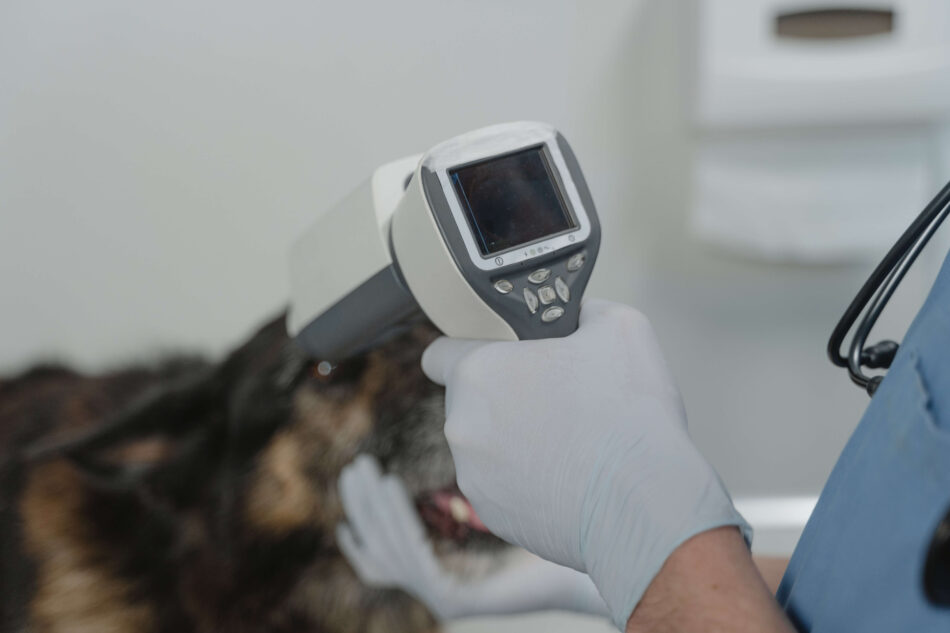Do Dogs Have to be Microchipped?
In the month of May, we’re answering all your microchipping questions, from, do dogs have to be microchipped, when a puppy should be chipped to how to change the information on the microchipping database to make sure you keep all your details up to date.
Table of Contents
Do dogs have to be microchipped?
As of right now in Australia, microchipping is defined by each state. For example, in ACT, microchipping of dogs is required by law prior to sale/transfer and by 12 weeks of age. Similarly, in WA, as of November 2015, the law states that all dogs must be microchipped. In TAS, section 15A of the Dog Control Act 2000 says that dogs must be microchipped by 6 months of age. Therefore, you should check with your local council to find out what applies to your area.
Regardless, microchipping is there for the safety of your pet and also others, even though it may seem like something out of a dystopian novel. Unfortunately, for the many dogs that are picked up as strays that don’t have a microchip, the rescue centres have no way of knowing who these beloved animals are or who they belong to. For many local authorities, dogs will remain lost or considered a stray for up to 5-7 days and then they are handed over to dog sanctuaries and rescue centres to be rehomed.
The information recorded on the chip will be able to identify your pet to others based on medical information, age, name, address, and details of their pet parents. It really is an important part of being a responsible dog owner.
What is a microchip?
Think of a microchip as a form of ID, like a passport or driving license, but for dogs. Our doggies can’t exactly communicate this sort of information themselves! Although a collar with an ID-tag with up-to-date contact details has all the necessary information, these could easily be removed, or could fall off.
A microchip is a computerised chip containing a unique 15 digit number that will be visible when scanned by a microchip reader. It is the size of a grain of rice and is inserted under the skin around the scruff of the neck between the dog’s shoulder blades with a needle. The chip will contain the owner’s details and a unique code that is specific to your pet.
Will my puppy be microchipped before I take them home?
In preparation for the arrival of your new pup, you need to ensure that your home is ready and that the right safety precautions are in place, toys and food are ready and a snuggly sleeping area is taken care of because your puppy will be doing a lot of sleeping to start with! It is important to understand the daily care of a dog when taking on a new puppy.
We would recommend the Bolster Dog Bed for puppies. The bolstered sides around the bed will provide a little safe barrier to keep your pup in place and stop them from falling out. The covers are removable and washable which is incredibly handy with such a youngster around!
Puppies cannot be sold until they are at least eight weeks old. Some vets will recommend that very small breeds like a chihuahua are microchipped when they are a bit older or bigger, but contact the vet to see if this is the case, and arrange an appointment for this simple procedure.
The breeder will register the puppy on a national database and the breeder’s details will forever be associated with the microchip. It will also include the keeper’s information which can be changed or updated if the information changes or the dog gets a new owner.
You can make sure your puppy is microchipped by asking your local vet or the breeder themselves. They will use a scanner that reads the chip and identifies the information.
Is my dog’s microchip proof of ownership?
The details of the microchip are registered through an approved database, not through the government. A person is considered to be a ‘breeder’ if they’re the owner of a dog that gives birth. The person who acts as the primary caregiver will register as a “keeper” rather than an owner of the dog. The keeper does not provide proof of ownership, however, the keeper will have a legal responsibility for the dog, so if the dog strays or causes injury, they will be held accountable.
If for whatever reason you have had to pass your dog over to someone else because you are unable to take care of them or are moving away, then it would be your responsibility to ensure that the new owner is given the correct microchip registration paperwork so that they can update the details themselves.
Who is responsible for microchipping a puppy?
When it comes to microchipping it is the responsibility of the dog breeder to ensure that all puppies are microchipped before they are rehomed.
If you are considering a rescue puppy rather than going through a breeder, the animal sanctuary will be responsible for updating the details of the dog and new keeper.
How do I change my dog’s microchip details?
When your dog’s identity chip is registered on a database you will receive a notification to confirm the details are correct and you will be given a microchip number. This information can be checked by contacting the database itself. You should also contact them if you, for some reason, need to change the details. There is a small fee associated with these administration changes, but it’s imperative that the information is correct in order to make sure that the chances of you being reunited with your pet if they go missing are secured.
If you are unsure which database your dog’s chip is registered with then you can get this checked by your local vet.
What happens if I don’t get my dog microchipped?
In an attempt to eliminate strays roaming the streets, dog theft, and putting immense pressure on animal sanctuaries and rescue centres it is the responsibility of the dog owners to make sure that their dogs are chipped and that the details are correct.
Why should I get my dog microchipped?
If your dog goes missing and is found not to have a chip then the chances of them being reunited with their pet families are very unlikely. Your dog wearing a dog collar with an id-tag is simply not enough. This will give you peace of mind knowing that if anything were to happen to your dog it could be returned to you!

What if my dog’s microchip doesn’t work properly?
A microchip is designed to last for the duration of a dog’s life, however, like with all things to do with technology, there is always a potential for them to fail or not work properly.
If for some reason the chip details are incorrect or it is not working properly you would need to contact the database itself or visit your vet who will be able to check to see if the chip is working and attempt to diagnose the problem.
Where can I get my dog microchipped?
Vets and dog breeders are the main organisations that provide a microchipping service, but it can also include registered dog walkers and groomers, as well as some animal charities.
How can I find out if my dog is microchipped?
If you have any concerns about whether your dog is microchipped then the best thing to do would be to visit your vet who will be able to scan the dog to check if there is an implanted chip. If that isn’t possible then other members of the dog lovers community such as a registered charity would be able to help.
How can I check my dog’s microchip information?
This information can be obtained through a microchip database, or your country’s equivalent. Dog owners will have a microchip number as part of the registration process and the relevant paperwork. This way, you will be able to access the information easily through a registered database.
Can microchipping hurt my dog?
As a dog lover, the last thing you want to do is hurt your dog, but microchipping is a very quick and simple procedure, even if it does involve a needle! It may cause some slight discomfort to your dog, but it will soon pass. It should be seen as a simple standard vaccination, which in the long run will protect your dog and keep them safe.
How much does it cost to microchip a dog?
The average cost of microchipping your dog is $45 in Australia and this is a one-off fee for the implantation of the chip. Some charities will offer this service for free. If you need to change the details of the chip at any point then there will be a small fee through the database that the chip is registered.
This entry was posted in Dogs
